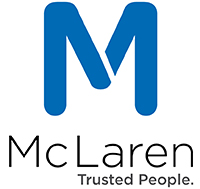A position/job description is a vital tool not only in the hiring process, but also for measuring performance and defining team structure. Use your position description to set clear expectations around what the job entails and what skills are required to be successful in it!
Each position description needs to be tailored to the job itself, but you can certainly use a template to ensure you capture all the key points.
Keep in mind that a position description is not just an internal document; if you are recruiting, applicants will typically expect to see a copy before making the decision to apply. At the very least, your shortlisted candidates need to see it so they can speak to the job requirements in their interview!
All position descriptions should include these sections:
Job title: of course!
Company values/mission: A brief summary of the organisation’s overall purpose to help ensure both current and future employees are on-board and share the same values.
Location of the role: Note the physical location so that people can make a call on whether the commute is feasible. If the role is split between different sites or based remotely, this needs to be made clear.
Type of contract: State whether it’s a permanent, fixed term, contract or a temporary position. Include assignment length where applicable.
Relationships: Who the role reports to, what team/department it sits in and what/if any direct reports there are. Any key stakeholder relationships can also be included here.
Hours of work: Number of hours per week, start and finish times including any flexible working arrangements.
Purpose of the role: A paragraph outlining what the job does i.e: “To provide administrative support to the Chief Executive and maintain office systems and processes”
Skills and competencies: Clearly state what skills and experience are needed to do the job, such as leadership, strategic planning, financial management etc.
Key duties/tasks: This can be laid out in table form, bullet points or under headings. Include all the core aspects of the role along with the expected outcome e.g.:
| Key Tasks/Accountabilities | Outcome |
|---|---|
| Manage Chief Executive’s diary and meeting arrangements | Chief Executive’s diary / meetings are managed effectively, and relevant documentation is received in preparation for meetings |
Other important things to include depending on the job itself are travel obligations, technical, legal or qualification requirements, along with any physical demands in the job such as ‘heavy lifting’ or ‘climbing ladders’.
The language used in your position description needs to be clear, easy to understand and gender neutral. Try to avoid technical or internal jargon where you can. If there’s no way around using jargon, it’s a good idea to include some definitions as an appendix so that nothing is lost in translation.
Keep it updated – it’s no good using the same old position description that’s existed since day dot. Jobs and the people in them evolve over time and the position description needs to reflect this. Take the opportunity to revise the position description each time you recruit or during annual performance reviews. However, it is important to note that if you are tweaking a position description while somebody is in the role, they need to be involved in the discussion and agree to the changes.
There is a fine line between information overload but still including all the necessary components. The length of a position description depends a lot on the role itself – expect higher level jobs like ‘Chief Executive’ or ‘Head of Corporate Services’ to have a longer position description than a ‘Sales Assistant’. That being said, we recommend no more than 3 pages, otherwise your reader is going to lose interest!
Position descriptions are an important document that take time and effort to get right. If you feel stuck or would like assistance we are always here to help so don’t hesitate to get in touch with the team today!
Best wishes,
Kirsty and Nikki


Leave a Reply